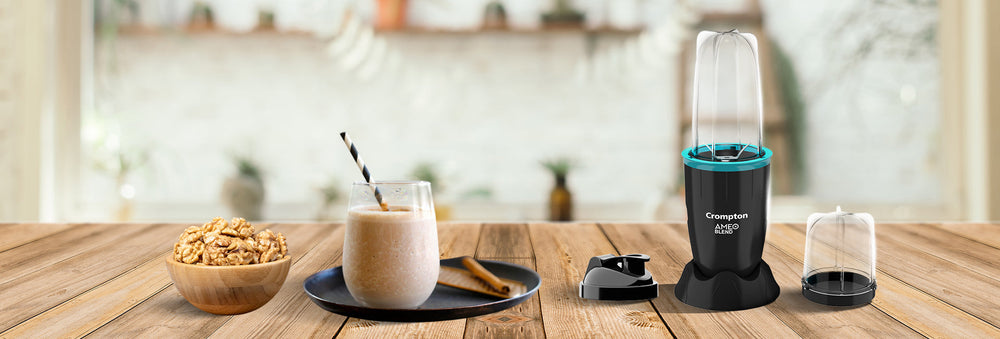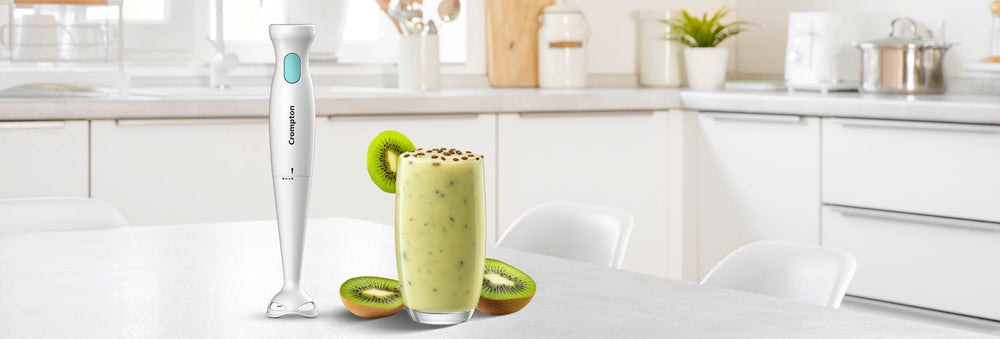Hand Blender vs Mixer Grinder


Are you tired of struggling with a clunky and outdated blender or grinder in your kitchen? Are you ready to upgrade to a more efficient and effective appliance, but not sure if you need a mixer grinder or a hand blender? It can be a tough decision, especially if you’re not sure what each appliance does or which one will better suit your needs.
We’ll take a closer look at hand blenders vs mixer grinders, their features and capabilities, and how they compare to each other. By the end, you’ll have a better understanding of which appliance is right for you.
But before we dive into the specifics, let’s start with a quick overview of each appliance.
Hand Blender
A hand blender, also known as an immersion blender, is a long, slender appliance with a motor at the base and a blending attachment at the top. It’s designed to be held in the hand while blending, pureeing, or emulsifying food and drinks right in the pot or bowl.
Mixer Grinder
A mixer grinder, on the other hand, is a more powerful appliance with a motor and a blade attachment for grinding and mixing. It typically comes with a range of jars for different functions, such as grinding spices, making chutneys, and blending smoothies. If you’re looking to buy a mixer grinder, refer to ouy buying guide.
Now that you have a basic understanding of each appliance, let’s dive into the differences of hand blenders vs mixer grinders in more detail.
1. Power Consumption
One of the main differences between hand blenders and mixer grinders is their power and capacity. Hand blenders are generally less powerful than mixer grinders, with motors ranging from 200 to 700 watts. Mixer grinders, on the other hand, can have motors as powerful as 750 watts or more.
This means that hand blenders are better suited for smaller tasks, such as blending a smoothie or pureeing some soup. Mixer grinders, on the other hand, can handle tougher tasks like grinding grains or nuts, and can even knead some dough for bread or pizzas.
2. Size
Another difference between the two appliances is the size of the jars they come with. Hand blenders typically only come with a single, narrow blending attachment, while mixer grinders come with a range of jars in different sizes and shapes.
This means that mixer grinders are more versatile and can handle a wider range of tasks, such as grinding spices, making chutneys, and even juicing. Hand blenders, on the other hand, are more limited in their capabilities and are best suited for blending and pureeing.
3. Usability
In terms of convenience and ease of use, hand blenders have the edge. They’re lightweight, easy to hold and operate, and don’t take up much counter space. They can be used to make smoothies, soups, sauces and dips. Mixer grinders, on the other hand, are larger, heavier, and more cumbersome to use. They also take up more counter space and can be used to grind whole spices, grains and pulses.
4. Price
Price is another factor to consider when deciding between a hand blender and a mixer grinder. Hand blenders are generally more affordable, with prices starting at around ₹500 – ₹3000. Mixer grinders, on the other hand, can cost anywhere from ₹2000- ₹7000, depending on the brand and features.
So if you’re still wondering which appliance is right for you, it depends on your needs and budget. If you’re looking for a lightweight, convenient appliance for basic blending and pureeing tasks, a hand blender is a good choice. But if you need a more powerful appliance for grinding and mixing a wider range of foods, a mixer grinder may be the better option. Hand blenders and mixer grinders are both useful appliances to have in the kitchen. Each has its own strengths and weaknesses, and the right choice for you will depend on your specific needs and budget.

 Read Previous Blog
Read Previous Blog



 at 9228880505 or write to us at
at 9228880505 or write to us at 